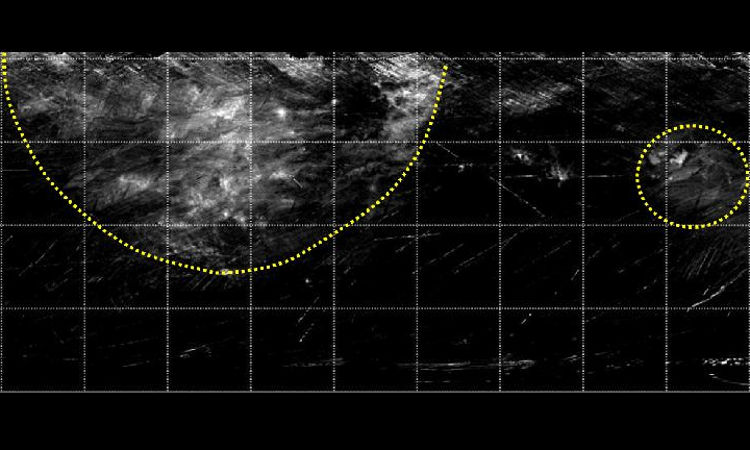
Using data relayed back to Earth by the NASA Dawn spacecraft, a team of experts from the Italian National Institute for Astrophysics, in Rome, developed a map revealing the spread of hydrated minerals on the surface of Vesta, the largest asteroid in the solar system.
The large space rock is believed to be a protoplanet, the precursor of a terrestrial-class planet like Mars, Venus or Mercury. However, something that occurred early on in the history of the solar system prevented it from growing beyond its current size.
Geologists and planetary scientists know that a natural mechanism is responsible for incorporating water in newly forming planets. However, the nature of this mechanism has been a matter of scientific debate for many years.
Details of the new investigation were presented INIA investigator Maria Cristina De Sanctis, who is also a member of the Dawn science team. She and her colleagues held a presentation on September 26 in Madrid, Spain, at the annual European Planetary Science Congress.
“Vesta's surface shows distinct areas enriched with hydrated materials. These regions are not dependent on solar illumination or temperature, as we find in the case of the Moon,” De Sanctis explained.
“The uneven distribution is unexpected and indicates ancient processes that differ from those believed to be responsible for delivering water to other airless bodies, like the Moon,” she went on to add.
The map to the left depicts the concentrations of hydrated minerals on the surface of Vesta. The regions of highest concentration are highlighted in yellow. A molecule made of hydrogen and oxygen atoms – called hydroxyl – is also present in very large quantities on Vesta.
“The origin of Vesta's hydroxyl is certainly complex and possibly not unique: there could be various sources, like formation of hydroxyl actually on Vesta, in addition to the primordial impactors,” De Sanctis explained.
“Vesta is providing new insights into the delivery of hydrous materials in the main asteroid belt, and may offer new scenarios on the delivery of hydrous minerals in the inner solar system, suggesting processes that may have played a role in the formation of terrestrial planets,” she concluded.
Via: Map of Vesta's Hydrated Minerals Created from Dawn Data
Tidak ada komentar:
Posting Komentar